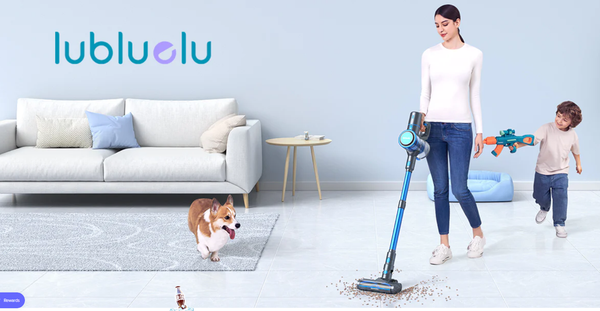The Journey of Vacuum cleaner: Basic Automation to Cutting-Edge Intelligence

As we delve into the rich history of the robot cleaner, we embark on a journey that spans from early prototypes to today's highly intelligent and autonomous machines. This blog aims to chronicle the significant milestones, technological advancements, and the impact of key players in the industry, such as the Dyson, Shark Hoover, lubluelu and the Bissell .
The Evolution of the Vacuum Cleaner: From Corded to Cordless, and Beyond
As we delve into the annals of household appliances, one particular device stands out for its transformative impact on domestic cleaning: the vacuum cleaner. From its humble beginnings as a manual, corded contraption to its current incarnation as a cordless, battery-powered beast, the vacuum cleaner has come a long way. In this blog, we'll trace the fascinating history of the vacuum cleaner, explore its various iterations, and discuss how it has become an indispensable part of modern life.
Early Days: The Manual Era
The vacuum cleaner's journey began in the late 19th century, when inventors started experimenting with ways to mechanize the dusting and sweeping process. One of the earliest prototypes was the "whirligig," invented by Daniel Hess in 1860. This cumbersome device consisted of a hand-cranked fan mounted on a table, which was designed to create a partial vacuum and suck dust through a cloth bag.
In 1876, American inventor James Murray Spangler patented a similar device he called the "suction sweeper." Spangler's invention was powered by a steam engine and had a large hose attached to a brush, which could be used to sweep dirt into a dustpan. While these early devices were primitive and inefficient, they marked the beginning of a revolution in household cleaning.

The Age of Electrification
The next major milestone in vacuum cleaner history occurred in 1901, when British engineer Hubert Cecil Booth patented the first electric vacuum cleaner. Dubbed the "Hoover," this corded device was powered by a motor that spun a fan to create a vacuum, sucking dust and dirt into a cloth bag. The Hoover quickly became a sensation, as it offered a much faster and easier way to clean carpets and floors than traditional methods.
The popularity of electric vacuum cleaners skyrocketed in the 1920s and 1930s, as more households were able to afford them. Manufacturers began experimenting with various attachments and features, such as different types of brushes and suction controls, to cater to specific cleaning needs. By the end of the 20th century, the vacuum cleaner had become a fixture in most homes, and the term "Hoover" had become synonymous with vacuum cleaning.

The Cordless Revolution
While corded vacuum cleaners were effective, they were also bulky and somewhat inconvenient. Their range was limited by the length of the power cord, and they required a nearby power socket to operate. Enter the cordless vacuum cleaner, which revolutionized the industry in the early 21st century.
Cordless vacuums were first introduced in the early 2000s, and they quickly gained popularity for their portability and convenience. These vacuums were powered by rechargeable batteries, allowing users to clean for longer periods without worrying about power cords or sockets. Manufacturers also began introducing models with advanced features like sensors that detected dirt and automatically adjusted suction power accordingly.
As battery technology improved, cordless vacuums became lighter, more powerful, and longer-lasting. Today, you can find cordless vacuums with powerful motors, long-lasting batteries, and a range of attachments and features that cater to every cleaning need.

The Future of Vacuum Cleaners
As we look ahead, it's clear that the vacuum cleaner will continue to evolve and adapt to meet the changing needs of consumers. With the rise of smart home technology, we can expect to see vacuums that integrate with other devices and can be controlled remotely via smartphones or voice commands. There's also potential for vacuums to become even more efficient and environmentally friendly, with the use of renewable energy sources and recycled materials.
The vacuum cleaner has come a long way since its humble beginnings as a manual, corded device. Through the years, it has transformed from a cumbersome contraption into a cordless, battery-powered beast that has become an indispensable part of modern life. As we move forward, it's exciting to imagine what the future holds for this iconic appliance and how it will continue to make our lives easier and more convenient.
Leave a comment